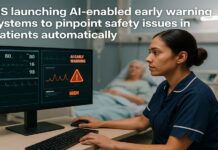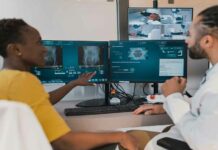Read below to learn everything there is to know about sequencing Covid-19 and why it is such a critical weapon in the fight against this deadly virus.
COVID-19 was first detected in December of 2019 in Wuhan, China. Since that day, the coronavirus has spread to 170 nations, and the World Health Organization has labeled it a pandemic.
Globally, this COVID-19 pandemic has resulted in a devastating loss of human life. Furthermore, this lethal virus continues to pose an extraordinary threat to public health. The pandemic’s social and economic upheaval is catastrophic.
While we are not in an ideal situation with COVID-19 at present, testing remains vital. Testing enables us to identify persons who are infected with the virus, treat them appropriately, or request that they isolate to prevent the infection from spreading.
Not only does testing assist us in identifying virus-infected individuals, but testing is also critical for the larger public health picture. It can aid scientists in characterizing disease propagation, contagiousness, and whether the disease is evolving over time.
There are two primary tests that are available to assist us in this endeavor: PCR testing and next-generation sequencing (NGS) (Next Generation Sequencing). Sequencing is critical for diagnosing COVID-19 and may also aid in our understanding of the disease’s transmission.
Sequencing Covid-19 and Genomes
The genetic material of a certain organism is known as its genome. A genome is essentially a collection of instructions that contain all of the information necessary for its maintenance and production. Human genomes are constructed using double-stranded DNA. You may be more familiar with the term DNA. These genomes collectively exceed three billion base letters in length.
In contrast to human genomes, the virus genomes can be composed of either DNA or RNA. COVID-19 is an RNA virus. It is composed of a single short RNA strand about 30,000 letters in length. While it is straightforward to visualize the genetic makeup of a genome, reading and comprehending it is far more complicated. Sequencing enables scientists to read and comprehend a virus’s RNA or DNA.
What is “Sequencing”?
When a person is diagnosed with coronavirus, their specimen sample is examined in conjunction with that of other individuals. This process is referred to as genomic sequencing. The positive test swab will go through numerous phases throughout this process to remove the mucus proteins from that of the RNA molecules. When it is already separated, these RNA molecules are converted into DNA that can then be easily read and understood. Genomic sequencing has already been utilized for a variety of purposes in the past, including tracking out the source of hospital illnesses and foodborne pathogen outbreaks.
Why is Sequencing Covid-19 Important?
Genomic sequencing is a method for scientists to read and comprehend the genetic information contained in RNA or DNA. Sequencing is used to trace a virus’s evolution. This information can assist public health officials in monitoring the virus’s spread and enacting the necessary laws and limits to inhibit the virus from spreading further.
Sequencing COVID-19 Globally
We have seen countries throughout the world ratchet up their testing efforts in recent months in trying to combat this dangerous virus. Knowing how the virus has evolved over time can assist us in determining the length of time the infection remained undetected. Additionally, it can help us in deciding what measures should be implemented to prevent the virus’s transmission until a vaccine is discovered.
COVID-19 sequencing is being finished by scientists worldwide as they collaborate to identify the origins of outbreaks.
Making use of sequencing as a tool in the battle against COVID-19 is critical. Not only can sequencing aid in the identification of novel viruses, but it may also aid in the tracking and monitoring of existing viruses to see if they evolve over time.
Sequencing the latest Covid-19 virus entails gathering samples from people who have been proven to be infected with the virus and sending them to a sequencing facility.
How Can Sequencing Covid-19 Help?
Next-generation sequencing (NGS) is a powerful and unbiased method for identifying new coronavirus strains and other pathogens without prior knowledge of the organisms. Growing concern over rapidly spreading novel SARS-CoV-2 coronavirus variations, such as with the B.1.1.7 strain in the United Kingdom and the B1.351 strain in South Africa, stresses the importance of more sequencing to be able to detect changes or any mutations promptly and limit the spread of newer strains. Early in the outbreak, sequencing Covid-19 was employed to identify the new coronavirus responsible for COVID-19 (SARS-CoV-2). NGS continues to provide vital evidence to public health experts, vaccine and pharmaceutical drug makers, and scientists, enabling laboratories to:
- Track the virus’s global transmission routes
- Rapid detection of changes to halt the spread of new strain types
- Determine which viral alterations are undetectable by conventional molecular diagnostic techniques
- Identify viral alterations that may impair the efficacy of vaccines
- Target identification for potential COVID-19 treatments
- Identify and describe co-infections of the respiratory tract and antimicrobial resistance alleles
Additional Information About Sequencing Covid-19 Methods
Sequencing of Amplicons
By sequencing certain portions of the viral genome, it detects if there is a presence of SARS-CoV-2 coronavirus. This technique entails ultra-deep sequencing of the PCR amplicons in order to analyze genomic regions of interest.
Target Enrichment Sequencing
Coronaviruses, influenza viruses, many other pathogenic respiratory tract microorganisms, and associated antibiotic resistance alleles must be identified and characterized. These findings may aid researchers in monitoring and optimizing infection control efforts. Through hybridization to target-specific probes, this approach captures genomic areas of interest.
Shotgun Metagenomics
This comprehensively sequences all organisms present in a sample in detail and finds novel diseases such as coronaviruses. This next-generation sequencing approach can help in the acceleration of outbreak investigations and the creation of new laboratory tests.
Due to the involvement of multiple organizations, learning outcomes from the sequencing process may be shared promptly with decision-makers. This research will definitely help us know the appropriate response we should do to combat COVID-19, and it will also aid in responding to future pandemics.
The alliance’s immediate benefits will include assisting with clinical patient care and fighting to save lives.

















